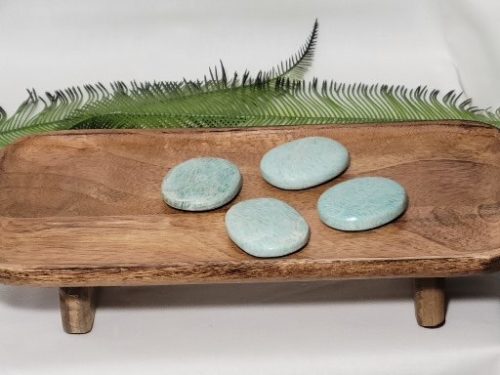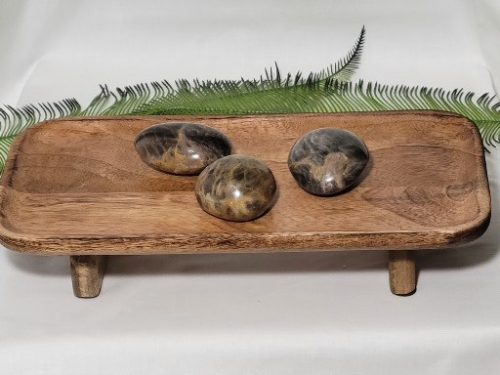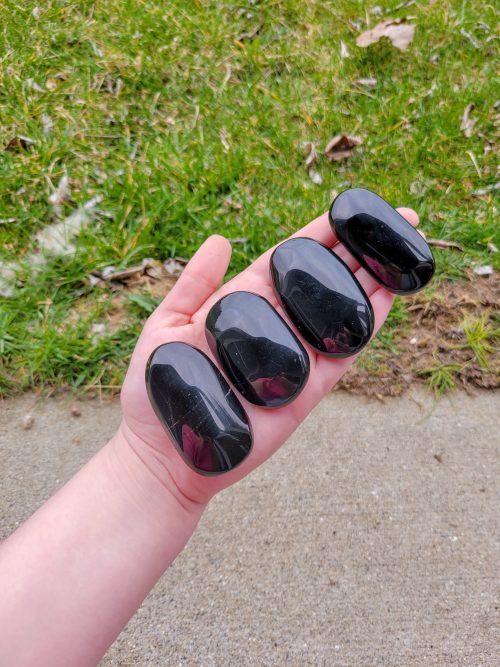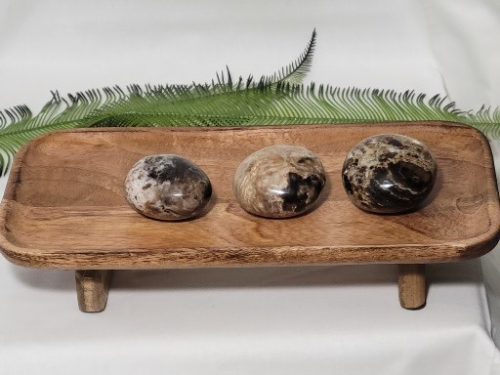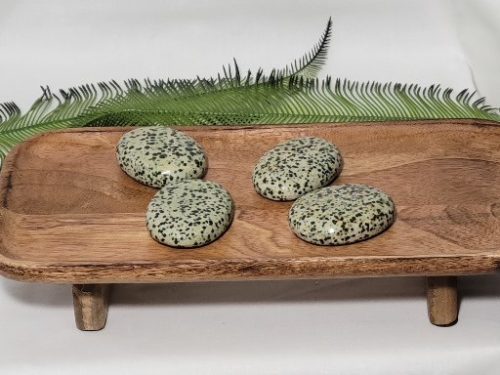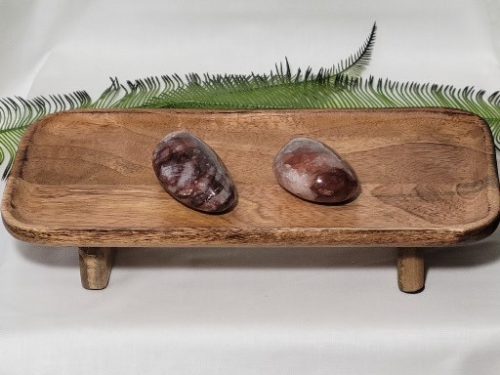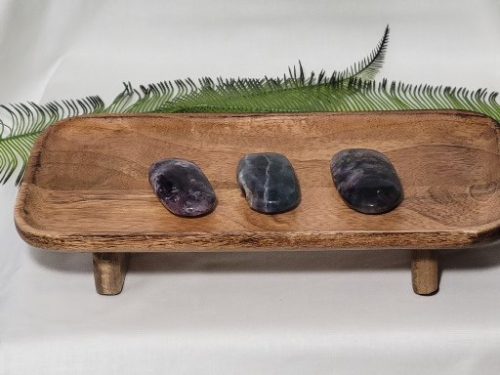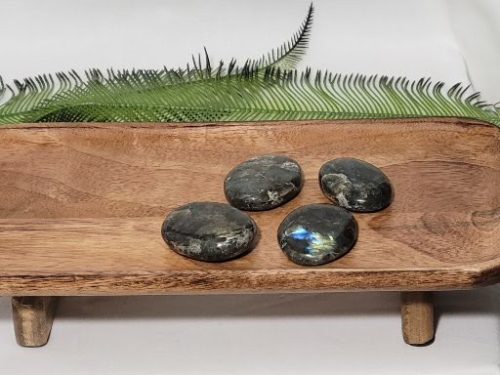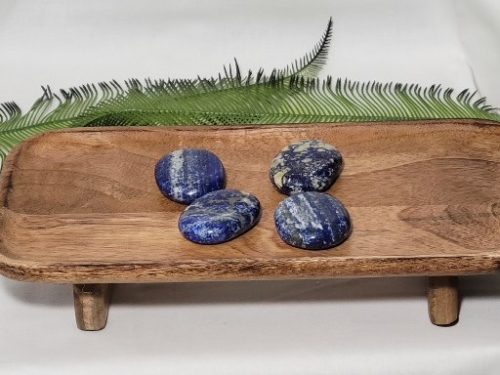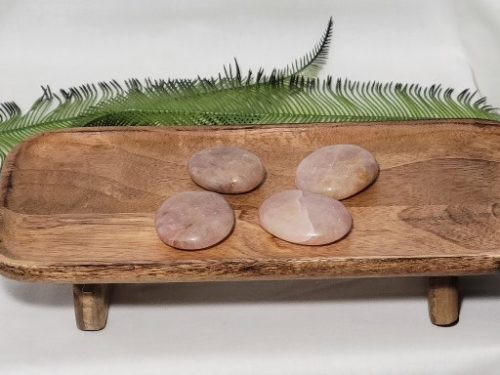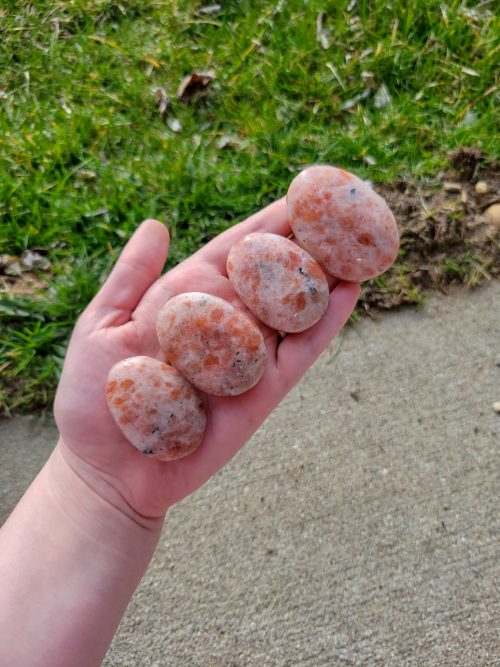-
4cm - 5cm Amazonite is a type of feldspar that gets its name from the Amazon River. Geologists once thought the color came from the oxides that come off of copper. In recent studies, geologists suggest this stone gets its color from the lead and water contents that are found within its contents. Originally found in Brazil, these beautiful rocks can also be found in Madagascar. There have also been findings of this crystal in Colorado, United States. ***Due to natural variations in stones, the appearance will vary***
-
6cm - 7cm Black moonstone is a silicate gemstone and is famous for its shimmering effect when moved in sunlight. It is believed that these stones resemble the moon when they show their shimmer. Most of the black moonstones have swirls and lines of tan, gray, and peach. Moonstones come in a variety of colors; black, pink, green, white, brown, and grey. This mineral was originally discovered in Madagascar but can also be found in Armenia, Australia, Mexico, and many other countries. ***Due to natural variations in stones, the appearance will vary***
-
5.5cm Wide Obsidian, igneous rocks occurring as a natural glass formed by the rapid cooling of viscous lava from volcanoes. Obsidian is about 65 to 80 percent silica and less than 1 percent water. This glass-like mineral is harder than window glass! Black obsidian is typically black but can have red inclusions due to iron and hematite. Gas bubbles can also get trapped inside this mineral and create either a gold or silver sheen beneath the surface. Obsidian is mainly found near the west coast of the United States including Hawaii and Alaska. ***Due to natural variations in stones, appearance will vary***
-
6cm - 7cm Chocolate calcite is a calcium carbonate mineral. It gets its name from its milky, chocolately appearance that comes from the different hues and banding. This mineral is often referred to as brown aragonite as they are both very similar in composition. Chocolate calcite can be found in calcium-rich environments. ***Due to natural variations in stones, the appearance will vary***
-
6cm - 7cm Dalmatian Jasper is made up of feldspars, quartz, alkali amphiboles, and small amounts of hematite and epidote. It gets its name from the neutral color body with the black spots (arfvedsonite). This stone is used in many homes all over the world as a decor item and some countries use this a lot in their jewelry. Dalmatian Jasper is found in Chihuahua, Mexico. ***Due to natural variations in stones, the appearance will vary***
-
7cm - 8cm Fire Quartz- also known as Hematoid Quartz- is clear quartz crystals with iron deposits it them. The color can range from a pale pink to a dark rust color. The formations can form in two different ways; where the hematite forms on the inside as the crystal quartz forms its shape around it. The other way is where the hematite forms on top of an already formed crystal. These beautiful crystals, originally found in Brazil, can also be found in other countries such as Switzerland, Germany, and the United States. ***Due to natural variations in stones, the appearance will vary***
-
6cm - 7cm Fluorite is composed of fluorine and calcium and is formed in hydrothermal veins in the Earth's crust. This mineral can be found in all colors of the rainbow with different hues. The different colors in Fluorite are caused by impurities within the mineral. The deeper colors are found in well-formed crystals. Fluorite was originally discovered in Illinois in 1842 but is no longer mined in the US. It can be found in China, South Africa, Mongolia, France, and Russia. ***Due to natural variations in stones, the appearance will vary***
-
4cm - 5cm Labradorite is a type of feldspar that gets it's flashy colors from intergrowths within the mineral. Light then travels through these intergrowths and displays its beautiful colors. These colors can range from purples and blues to greens and yellows. This mineral gets its name from where it was originally discovered, in Labrador, Canada. This mineral was also found in Finland during WWII and was also known as "Falcon's Eye". ***Due to natural variations in stones, the appearance will vary***
-
5cm - 6cm Lapis Lazuli is a semiprecious stone that is commonly used in jewelry and decor all over the world. It is a metamorphic mineral who's composition is variable. Very frequently, Lapis has Pyrite inclusions in it. This semiprecious stone gets its color from the deep blue Lazurite in it (also found in sodalite). Lapis is found in the mines Badakshan, northeastern Afghanistan, and those near Ovalle, Chile. ***Due to natural variations in stones, the appearance will vary***
-
5cm - 6cm Rose Quartz is an anhedral crystal. It is found in the cores of pegmatites and gets its color from microscopic inclusions of a pink variety of the mineral dumortierite . Rose Quartz is naturally a pink hue but can have more hues of grey/purple or red. This mineral can be found in many places including South Africa, Madagascar, and Brazil. ***Due to natural variations in stones, the appearance will vary***
-
5.5cm Wide Sunstone is a plagioclase feldspar. The glitter-like sheen in this stone comes from inclusions that are most commonly hematite but can also be goethite, pyrite, or copper (rare). This beautiful stone is formed in molten lava and can be found in many places around the world such as Australia, Canada, China, Congo, India, Mexico, Norway, Russia, Sri Lanka, Tanzania, the U.S. ***Due to natural variations in stones, appearance will vary***
-
4.5cm Wide Sunstone is a plagioclase feldspar. The glitter-like sheen in this stone comes from inclusions that are most commonly hematite but can also be goethite, pyrite, or copper (rare). This beautiful stone is formed in molten lava and can be found in many places around the world such as Australia, Canada, China, Congo, India, Mexico, Norway, Russia, Sri Lanka, Tanzania, the U.S. ***Due to natural variations in stones, appearance will vary***

